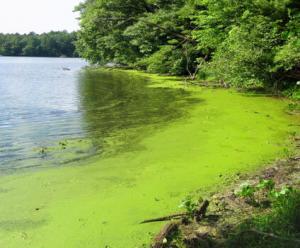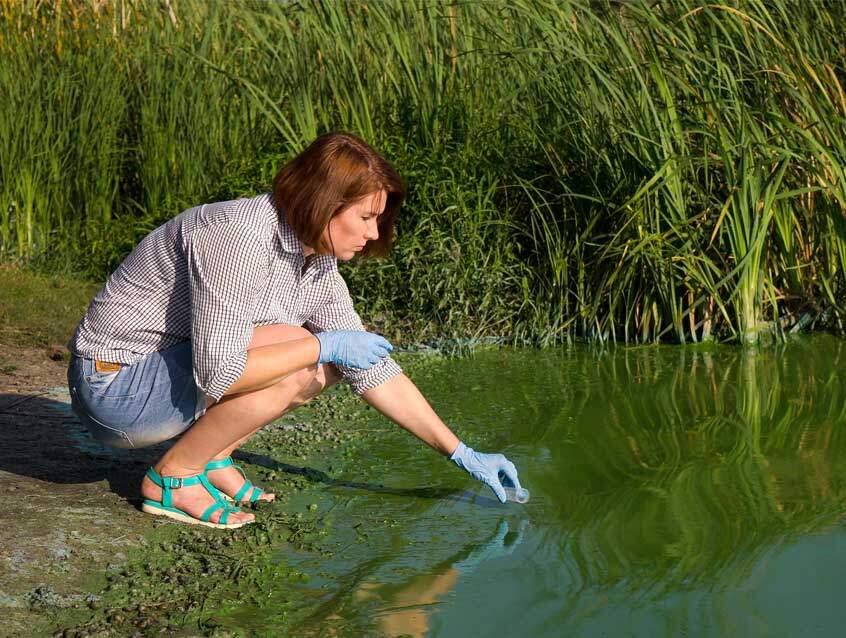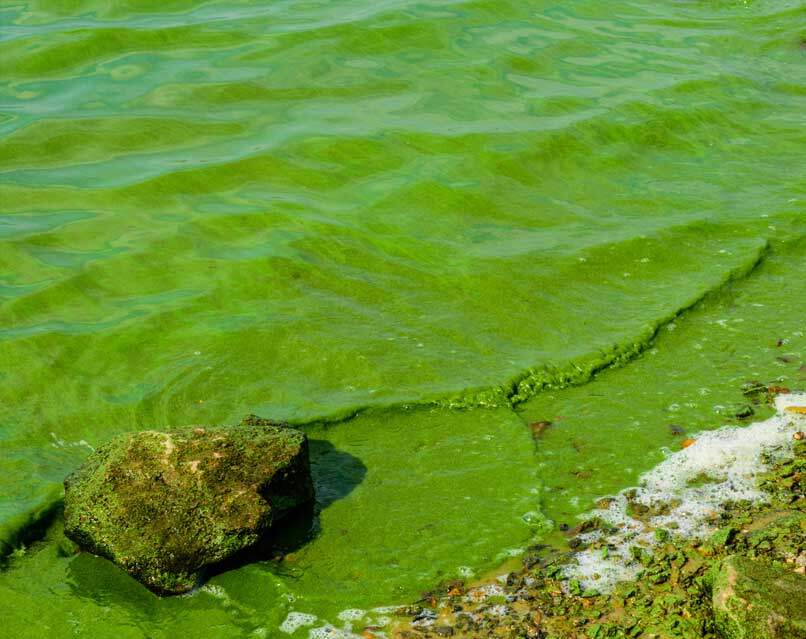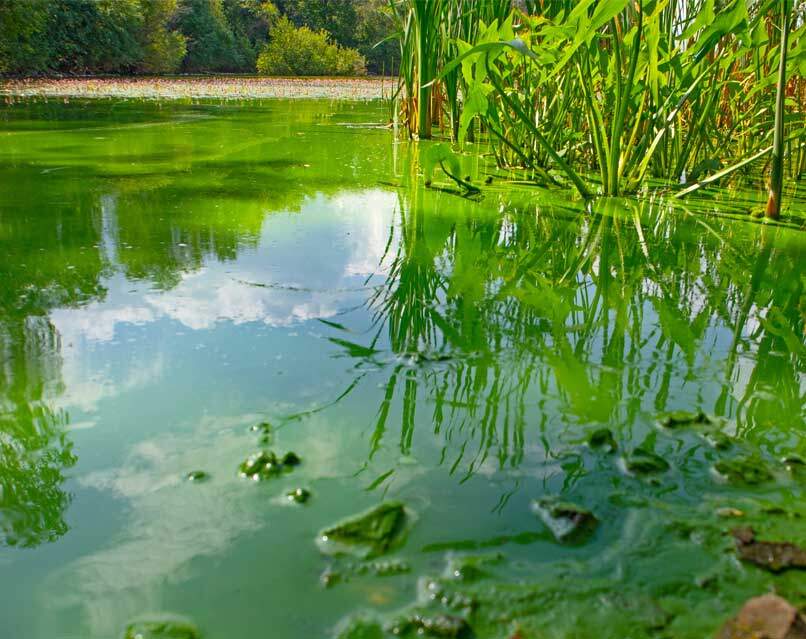Aquatic ecosystems, from serene backyard ponds to vast lakes across Central New York, western New York, and the Southern Tier, are susceptible to a toxic algae and cyanobacteria blooms. These explosive growths of microscopic algae can pose significant risks to human health, wildlife, and the delicate balance of the surrounding environment. As climate change exacerbates the frequency and severity of these events, it has become increasingly crucial for pond owners and water enthusiasts to understand the perils of harmful algae and how to mitigate their impact.

Understanding Algae Blooms
Algae are a fundamental component of healthy aquatic environments, playing vital roles in nutrient cycling and supporting diverse food webs. However, when the intricate balance of an ecosystem is disrupted, algae can proliferate at alarming rates, leading to the formation of algae blooms. These blooms can range in color from blue-green to red, brown, or gray, often resembling “pea soup” or “spilled paint” on the water’s surface.
Types of Algae Blooms
Algae blooms can be broadly categorized into three main types:
- Filamentous Algae: These hair-like strands of algae intertwine to form mats that can cover the surface of a pond, creating an unsightly and potentially odorous nuisance.
- Macrophytic Algae: Also known as “pond weeds,” these larger, plant-like algae species can establish themselves on the bottom of a water body and disrupt the ecosystem.
- Planktonic Algae: Microscopic algae that float freely in the water column, these can sometimes produce harmful toxins and pose a significant threat to human and animal health.
Factors Influencing Algae Blooms
Algae blooms thrive under specific environmental conditions, including:
- Nutrient-rich water: Excess nutrients, such as nitrogen and phosphorus, from sources like fertilizers, animal waste, and sewage can fuel the rapid growth of algae.
- Warm temperatures: Warmer water temperatures, often exacerbated by climate change, create ideal conditions for algae proliferation.
- Slow-moving water: Stagnant or slow-moving bodies of water are more susceptible to algae blooms, as the lack of water circulation allows the algae to accumulate.
- Sunlight: Abundant sunlight provides the energy necessary for photosynthesis, enabling algae to rapidly multiply.
The Dangers of Harmful Algae Blooms
Harmful algae blooms pose a multifaceted threat, with the potential to harm human health, disrupt ecosystems, and have far-reaching economic consequences.
Toxic Algae Threats
Certain types of algae, particularly cyanobacteria (commonly known as “blue-green algae”), can produce potent toxins called cyanotoxins. Exposure to these toxins can lead to a range of adverse health effects, including:
- Skin and eye irritation
- Gastrointestinal issues, such as nausea, vomiting, and diarrhea
- Liver and kidney damage
- Neurological problems, including headaches and respiratory distress
Humans can be exposed to these toxins through various routes, such as swimming, drinking contaminated water, or even breathing in airborne particles near the affected water body.
Impacts on Aquatic Ecosystems
Harmful algae blooms can have devastating consequences for the delicate balance of aquatic ecosystems. As the algae proliferate, they can:
- Deplete oxygen levels in the water, leading to the creation of “dead zones” where little to no marine life can survive.
- Block sunlight from reaching submerged plants, disrupting the photosynthetic process and causing them to die off.
- Clog the gills of fish and other aquatic organisms, making it difficult for them to breathe.
- Accumulate toxins in the food chain, potentially harming larger predators, including humans who consume contaminated seafood.
Economic and Social Impacts
The presence of harmful algae blooms can have far-reaching economic and social consequences, including:
- Increased water treatment costs: Municipalities and water utilities may need to invest in additional filtration and treatment methods to ensure safe drinking water.
- Disruption of recreational activities: Beaches, lakes, and ponds may be closed due to the presence of toxic algae, impacting tourism and local economies.
- Damage to aquaculture and fisheries: Algae blooms can devastate commercial fishing and aquaculture operations, leading to financial losses and disruptions in the food supply.
Preventing and Controlling Harmful Algae Blooms
Addressing the problem of harmful algae blooms requires a multifaceted approach that focuses on both prevention and remediation.
Preventive Measures
To reduce the likelihood of harmful algae blooms in ponds and other water bodies, consider the following preventive measures:
- Nutrient Management: Implement best practices to minimize the introduction of excess nutrients, such as proper disposal of grass clippings, proper use of fertilizers, and managing animal waste.
- Water Circulation: Maintain water circulation through the use of aerators, fountains, or other mechanical devices to prevent stagnation and promote oxygenation.
- Biological Interventions: Introduce beneficial bacteria or other organisms that can outcompete or suppress the growth of harmful algae species.
- Regular Monitoring: Regularly test the water quality and monitor for signs of algae blooms, allowing for early intervention and mitigation.
Remediation Strategies
If a harmful algae bloom has already occurred, a combination of the following remediation strategies may be necessary:
- Mechanical Removal: Physically removing the visible algae growth through skimming, harvesting, or other mechanical means can help reduce the immediate impact. Due to the toxic nature of harmful algae blooms (HAB), this should only be done by a professional pond maintenance company.
- Biological Control: Introducing beneficial natural pond treatment products, as well as certain types of fish which can help restore the natural balance of the ecosystem and inhibit the growth of harmful algae.
- Nutrient Reduction: Addressing the underlying causes of the bloom, such as excess nutrients, through measures like improved stormwater management or wetland restoration, can help prevent future occurrences.
Protecting Yourself and Your Pond
If you suspect a harmful algae bloom in your pond, it is crucial to take immediate action to safeguard yourself, your family, and your pets.
- Recognize the Signs. Be on the lookout for the telltale signs of a harmful algae bloom, such as a “pea soup” or “spilled paint” appearance on the water’s surface, or the presence of a distinct, unpleasant odor.
- Avoid Contact. If you suspect a harmful algae bloom, it is best to avoid any direct contact with the water, including swimming, wading, or allowing pets to enter the pond. Ingesting or even inhaling the toxins can have severe health consequences.
- Seek Professional Assistance. Consult with a professional pond management company or environmental experts to have the water tested and develop a comprehensive plan for addressing the harmful algae bloom. They can provide guidance on safe remediation strategies and ongoing maintenance to prevent future occurrences.
Monitor Local Advisories
Keep a close eye on local, county, or state health department advisories and updates regarding the presence of harmful algae blooms in your area. These resources can provide valuable information on the current status of water bodies and any associated health risks.
By staying informed, taking proactive steps, and working together as a community, we can safeguard our ponds from the dangers of harmful algae blooms and ensure the long-term health and resilience of our aquatic ecosystems.





